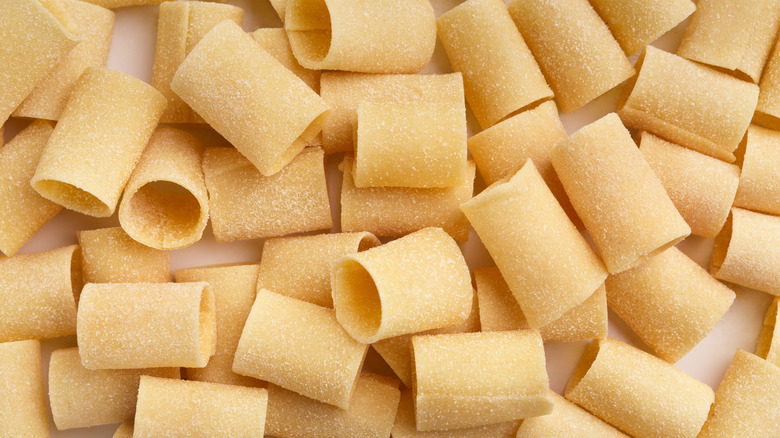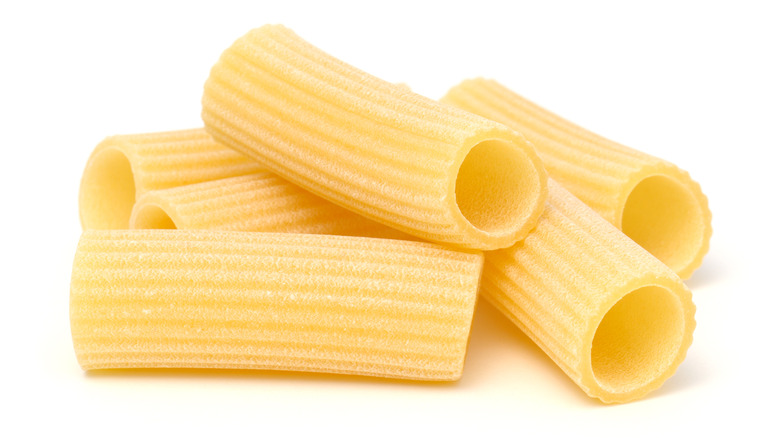Never Get Tripped Up Between Paccheri And Rigatoni Again
Trying to rank different pasta types is a fool's errand, but there are ways to predict if it will be popular or trendy. Once it's featured in a movie for example, it can be burnt in our collective memories, like the scene in Lady and the Tramp where two cartoon dogs share a plate of spaghetti and a kiss.
In comparison, there aren't similar pop culture vessels for paccheri and rigatoni, two tube-shaped pasta. Rigatoni had a brief period of fame when it was featured in the movie Big Night (1996) but most casual pasta eaters would struggle to differentiate it.
To be fair, both of these kinds of pasta are made from durum wheat flour and water, giving it a chewy and firm texture that holds up well in sauces. They look the same but differ in size and application. Paccheri is bigger in diameter so it is typically used for stuffed dishes. Rigatoni, true to its name, has ridges on its surface, so it clings to chunky sauces very well.
Use paccheri for stuffed pasta dishes
Paccheri is lesser known than rigatoni and sometimes unfairly referred to as a larger rigatoni, which is a shame because it has an interesting origin story. It is from the Campania region of Italy and as the legend goes, either pasta makers or garlic farmers made paccheri to hide and smuggle cloves of garlic to Northern Europe, where Italian garlic was banned to protect local farmers. This explains the larger size and diameter because the key is that it can be used to stuff (or hide) other ingredients.
Perhaps paccheri pays homage to its garlic origins because common stuffing for paccheri includes garlicky sausage in tomato sauce, or porcini mushrooms served with a garlic-flavored white wine sauce.
But you do not have to stuff paccheri if you don't want to. Since it holds its shape and does not collapse under its own weight once cooked, it suits heavy, meaty sauces like a ragu or bolognese.
And use rigatoni for baked pasta dishes
In comparison, rigatoni is common in both Rome and southern parts of Italy and is a member of the short pasta family which includes ziti and penne. It is similar in texture to paccheri but has a slightly narrower diameter which means it is rarely used as a container for stuffed food. Instead, as mentioned above the biggest drawcard for rigatoni is that it has ridges or grooves that sometimes spiral around the tube.
These ridges are also markers of industrialisation or mass production because it is machine-made rather than handmade. Irrespective, these ridges are perfect to mop up chunky tomato, cheese, or meat sauces in ways that a smooth-surfaced pasta like paccheri does not. A good way to use it is in pasta alla norma, which is a rich braised eggplant and tomato pasta dish.
It is also great for baked pasta dishes because it does not become mushy even after you boil and then bake it. If you have the time, try to recreate the timpano dish from Big Night, courtesy of Stanley Tucci himself.


